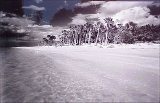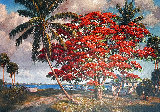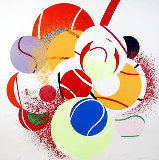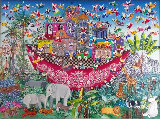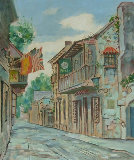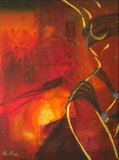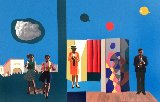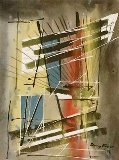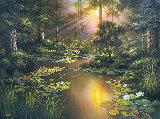


Harold Newton
Seascape, Florida Highwaymen 27x51 Huge
Original Painting : Oil on Canvas
Size : 24x48 in | 61x122 cm
Framed : 27x51 in | 69x130 cm
-
🔥Huge Framed Oil on Canvas - 6 Watchers - Inquire $$$$$
Original Florida Highwaymen painter
Hand SignedSigned 'Harry'
Condition Excellent
Other FrameLight Wood Birch Colored Frame
Purchased fromOther
Provenance / HistoryAfrican Art Gallery and Museum 1711 West Kennedy, Tampa, Florida
Highway Men Paintings
Story / Additional InfoThe Florida Highwaymen are a part of America's History and the 2016 NMAAHC, Smithsonian National Museum of African American History and Culture.
Valued in the thousands and tens of thousands, the historical paintings of the Florida Highwaymen, are highly collected.
Certificate of AuthenticityArt Brokerage
LID78534
Harold Newton - United States
Art Brokerage: Harold Newton American Artist: b. 1934-1994. Harold Newton (1934-1994) was a central and founding member of the loose-knit group of African American artists known as the Florida Highwaymen. Although Newton and the other Highwaymen were not part of an organized school, all were influenced by the work of Florida landscape artist A.E. Backus and shared a commitment to capturing Florida’s scenic beauty in a quick, formulaic style. Despite his lack of formal training, Newton had an exceptional ability to capture the subtlety and variety of Florida’s coastlines and wetlands, an ability that distances him from other, central figures in the group such as Alfred Hair. Indeed, Newton is generally regarded as the most talented of the Highwaymen and in recent years his work has been coveted by serious art collectors and Highwaymen enthusiasts both regionally and nationally. His oil paintings, once sold door-to-door for very modest sums, now can fetch in the tens of thousands, depending on the scene, composition, and quality. Gary Monroe, author of the book Harold Newton, The Original Highwayman, captures Newton’s place in the Highwaymen movement and Florida history in the following remark: Harold Newton stands alone, having created the images of modern Florida that symbolized the state as the place to really be alive, to raise a family in its fecund wilds, and to find solace as one looks back at life in retirement. Florida was the Promised Land. The artist possessed an unmatched ability to define the state’s meaning and natural beauty in iconic dimensions. This is his legacy. Arguably, much of the appeal of Newton’s work (as well as the other artists in his ilk) stems from the unlikely success of a black artist in a time of racial segregation and disenfranchisement. Newton was undeterred, and, pursuing his love for his art, secured a considerable following among the more privileged and affluent members of the Florida communities through which he traveled. Newton was an outsider to the more pervasive depictions of American life in the 1950s and 1960s, but it is this fact that inspires a more enlightened America to look back on his work with admiration and respect. Somewhat ironically, Newton’s life and works represents– from the vantage point of the opening decade of the 21st Century – the very best of a nation that honors the fortitude and independence of its citizens. Harold Newton died in 1994, a year after suffering a debilitating stroke. He was 59 years old. Listings wanted.



